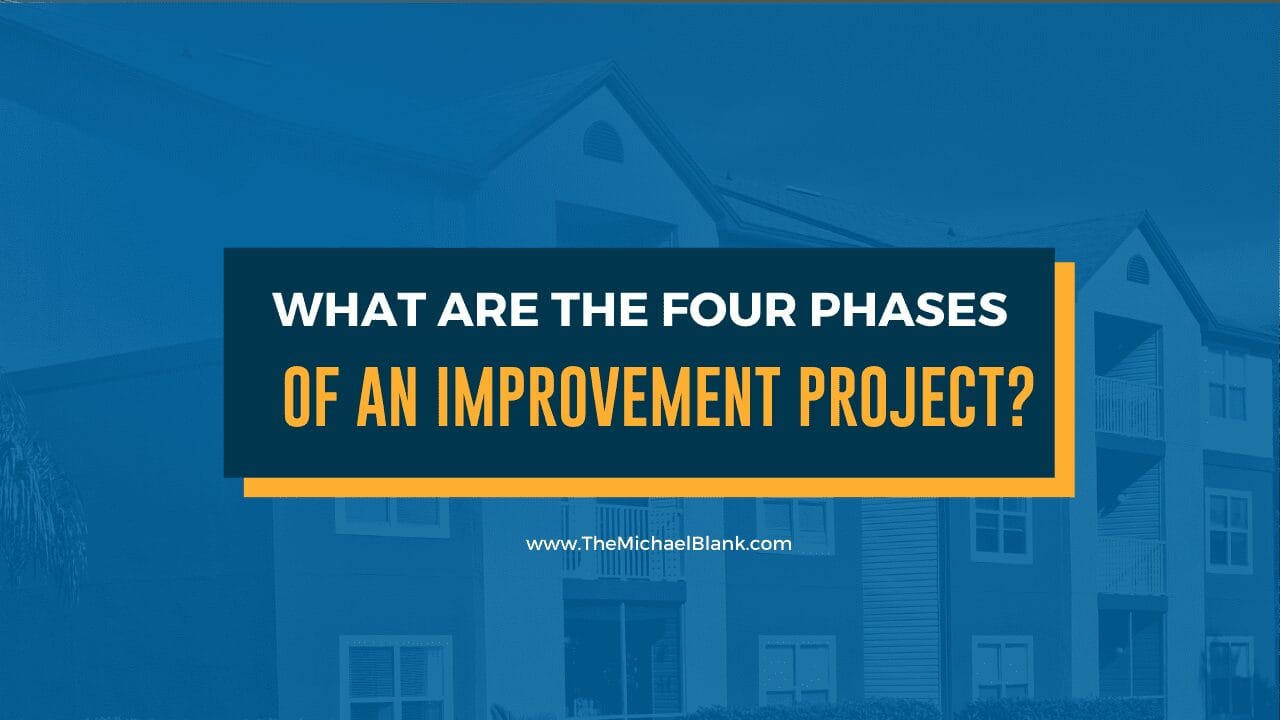We believe the value-add real estate strategy is the best strategy for both experienced investors, or those just starting out, because it provides an increasing cash flow through rental income and a good return on investment upon sale.
Value-add real estate is a property that has existing income, but requires some improvements. This property may be a bit run-down and in need of renovation or a different management style.
To accomplish this goal of adding value to a property, you’ll want to map out your plan in stages.
What are the four phases of an improvement project?
Make sure you download ALL my resources for FREE at this link: https://themichaelblank.com/vault
1. Assessment
The first phase of an improvement project is simply the initiation of the project. This means assessing the property, crunching numbers, and coming up with a plan for what needs to be done to maximize the investment.
Upgrades might include new fixtures, amenity upgrades, or landscaping.
During this first phase, you will determine what needs to be done and the resources you will need to get there.
2. Planning
The next phase of an improvement project is creating a detailed plan.
You will work with your team to hammer out the details, and get clear about the steps you need to take.
During this phase, you will be focused not only on the scope of the project but also the constraints of your budget. You will be analyzing the level of risk associated with each step and create a vision for the finished project to serve as a guide for every member of your team.
3. Execution
The third phase is the action phase.
This is when you will put your plans into action and start doing the work, which will include monitoring and controlling the project. You might have to make adjustment and corrections during this phase in order to stay within your budget.
This action phase will also require you to stay in communication with your team, make quality assessments, and keep everyone on task completing goals with a shared vision for completion of the project.
4. Delivery
The last phase of an improvement project is to bring closure. This is when you deliver the final product.
As your goals are met and the project is completed, you will want to review the journey you’ve been on and document not only what was successful, but also any complications or lessons learned during the execution of the project.
In this way, the last phase of an improvement project is a sort of launch pad for your next project.
There are numerous distressed properties out there, sitting in just the right balance between risk and reward.
These value-add properties are the kind of properties we look for and that we advise that you look for also.
These deals are the best way to achieve desired returns for you and your investors.

